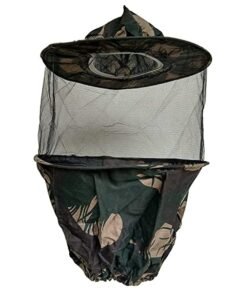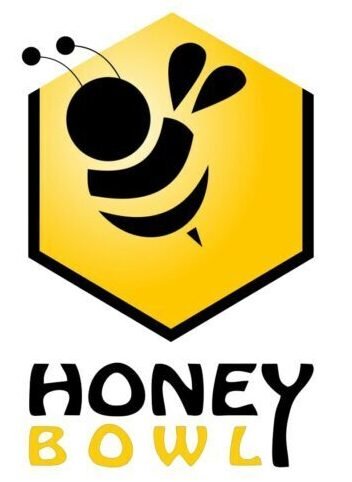Beekeeping as a hobby
Beekeeping as a hobby can be both rewarding and enjoyable for individuals interested in nature, sustainability, and learning about bees. Here are some reasons why beekeeping can be a fulfilling hobby:
-
Connection with Nature: Beekeeping allows hobbyists to connect with nature and gain a deeper understanding of bee behavior, pollination, and the ecosystem. Observing bees at work in the hive and in the surrounding environment can be fascinating and educational.
-
Honey Production: One of the primary benefits of beekeeping is the opportunity to harvest honey. Hobbyist beekeepers can enjoy the satisfaction of producing their own honey, which can be shared with family and friends or used for personal consumption.
-
Pollination: Bees play a crucial role in pollinating flowers, fruits, and vegetables. By keeping bees, hobbyists contribute to pollinator health and ecosystem diversity in their local area.
-
Learning Experience: Beekeeping offers a continuous learning experience. Hobbyists can learn about bee biology, hive management, pest and disease control, and other aspects of beekeeping through books, online resources, workshops, and hands-on experience.
-
Stress Relief: Many beekeepers find working with bees to be a relaxing and therapeutic activity. The rhythmic hum of the hive and the focus required for hive inspections can provide a sense of calm and mindfulness.

Langstroth Beehive with super Box
use for: APIS MELLIFERA(italian bees)
we are manufacture Langstroth Beehive with
22 mm thickness of PINEWOOD with cross joints for longer shelf life,
Box contains 20 mm thickness of pinewood with cross joints for longer shelf life.In Langstroth beehive contains 10 wooden brood frames & 10 wooden Super Frames with,
queen excluder,
top cover with Anti-corrosive coated steel sheet for longer life
Deep Brood Boxes (16-1/4″ x 19-7/8″ x 9-5/8″) with 10 Premium Pine Frames.
Medium Super Boxes (16-1/4″ x 19-7/8″ x 6-5/8″) with 10 Premium Pine Frames.

Langstroth Beehive
use for: APIS MELLIFERA(italian bees)
we are manufacture Langstroth Beehive with
22 mm thickness of PINEWOOD with cross joints for longer shelf life,
In Langstroth beehive contains 10 wooden brood frames,
top cover with Anti-corrosive coated steel sheet for longer life,
The Hives are fully assembled
PERFECT SIZE This ready-to-use bee hive box measures 16-1/4″ x 19-7/8″ x 9-5/8″, making it great for keeping in a backyard or field

ISI Type A
use for Apis Cerana Indica(indian bees)—ISI Type `A`box contains
22 mm thickness of PINEWOOD with cross joints for longer shelf life,
8 Brood Frames in brood chember &
8 super Frames in super chember,
base bord with One Entrance Bar
observation boards on top &
top cover with Anti-corrosive coated steel sheet for longer life
The Hives are fully assembled
Bottom Board : 361mmX296mmX50mm (LxBxH)Brood Chamber (Outer): 286mmx296mmx172mm (LxBxH)Super Chamber (Outer): 286mmx296mmx92mm (LxBxH)Top Cover(Outer) : 328mmX338mmx100mm (LxBxH)

Wooden Frame For beehive box
Foundationless frames allow bees to build comb any way they like. Bees have the freedom to build the size cells they need and are not exposed to the chemicals commonly associated with wax coated foundation
This 8 frame replacement kit is constructed to help you continue with a prosperous colony.
Note: Frames are delivered without wax foundation.
Note: Frames are delivered with wax foundation.

Beekeeping Suit
The clothes that beekeepers wear is called a bee suit, or a beekeeping suit. A full bee suit consists of long sleeves and long pants to protect the beekeeper. Sometimes bee suits will come with a hat and veil as well

Hive Tools
Equipment needs vary with the size of your operation, number of colonies, and the type of honey you plan to produce. The basic equipment you need are the components of the hive, protective gear, smoker and hive tool, and the equipment you need for handling the honey crop. Sometimes bee suits will come with a hat and veil as well

Honey Extractor
A honey extractor is a mechanical device used in beekeeping to extract honey from honeycomb frames without destroying the comb itself. It’s a crucial tool for beekeepers during the honey harvesting process. Here’s how a honey extractor works and some key features:
Basic Functionality: A honey extractor works on the principle of centrifugal force. The honeycomb frames are placed inside a cylindrical drum or basket, which rotates rapidly when manually or electrically powered. As the drum spins, the honey is forced out of the cells due to centrifugal force and collects at the bottom of the extractor.

Smoker
Build a smoky fire with cardboard and dead firewood right under the beehive. Don’t stick around to watch the bees get smoked out. They will become aggressive when agitated so it’s best to go back inside.

Swarm catching net
In most situations when a honey bee swarm is found on a tree, shrub or house you do not need to do anything. Swarms are temporary and the bees will move on if you patiently ignore them. Stay back and keep others away from the swarm, but feel free to admire and appreciate the bees from a safe distance

Pollen Trape
A pollen trap is an equipment that is placed into the hive entrance and forces the worker bees to crawl through tiny openings as they enter the hive. These tiny openings strip the pollen from the worker bees’ legs which will then fall into a tray.
Bee pollen contains many vitamins, minerals and antioxidants, making it incredibly healthy. Studies have linked bee pollen and its compounds to health benefits such as decreased inflammation, as well as improved immunity, menopausal symptoms and wound healing.

Bee Veil (Protection Cap)
A protective device of fine fabric or wire mesh worn about the head by beekeepers when working with bees.
Beekeeping is the practice of intentional maintenance of honeybee hives by humans. A beekeeper may keep bees in order to collect honey and beeswax, or for the purpose of pollinating crops, or to produce bees for sale to other beekeepers. A location where bees are kept is called an apiary.
The protective head covering beekeepers wear is called a hat and veil. It consists of a hat with a wide brim, with mesh hanging down to your shoulders. … The fencing veil is the most popular, followed by the round and square veil. Many bee suits include a veil
Because it is so thick, the bee’s stinger can’t reach you. It has Velcro straps on the wrists and ankles. When worn, it tends to be a bit scratchy, so plan to wear tee shirts and shorts underneath.

Bee wax Foundation sheet for bee box
A Wax foundation or honeycomb base is a plate made of wax forming the base of one honeycomb. It is used in beekeeping to give the bees a foundation on which they can build the honeycomb. Wax foundation is considered one of the most important inventions in modern beekeeping.
The production of beeswax is essential to the bee colony. It is used to construct the combs in which the bees raise their brood and into which they store pollen and surplus honey for the winter.

Queen Gate
For Apis Cerana Indica Beehive box
Install the queen in the middle of the brood area, towards the center of the hive. We recommend using a large rubber band around the entire frame to secure the queen cage. Install with the candy side facing the top of the hive. This ensures any dead attendants will not block the candy entrance.

Queen Cage
A push-in cage is a queen introduction approach favored by many beekeepers because it allows the queen to start laying eggs immediately and it allows a larger surface area for the bees to have greater access to the queen’s pheromones. … The cage is placed over an area of comb that contains emerging brood.

Hand Glows
The tighter your gloves fit, the more dexterity you will have, but there is a tradeoff, snug gloves are easier for bees to sting through. Usually though, when a bee stings through the glove, it is not quite as bad as a normal sting. I call them “micro stings” because the stinger may not get all the way through.

Grafting Needle for Bees
Grafting is simply the transfer of larvae that were intended to be workers into queen cell cups. … Worker larvae are transferred from cells in comb into queen cell cups, then placed in a colony that is in the right condition to convert them into queen cells. It’s that simple!
To induce queen rearing, you must first remove the queen in the chosen strong colony. Remove her and one frame of capped brood covered with bees. Place this frame into a colony for making a nucleus.

Queen Excluder
Purpose. The intent of the queen excluder is to limit the queen’s access to the honey supers. If the queen lays eggs in the honey supers and a brood develops in them it is difficult to harvest clean honey.
Make sure the queen remains in the brood box. Place the queen excluder on the top of the brood box then add the honey super. The frames that were removed from the brood chamber are placed in the honey super above the excluder. These frames help to draw bees through the excluder mainly if they have brood in them.
